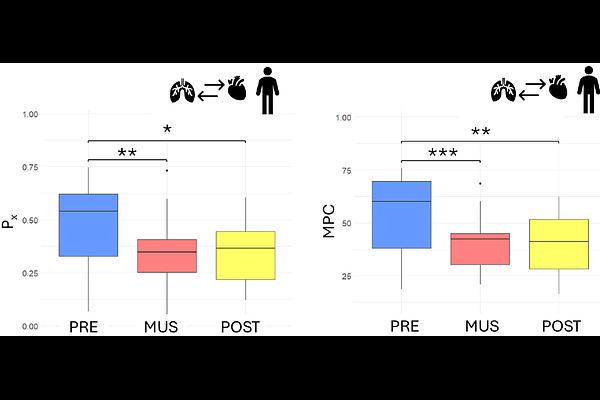Cardiorespiratory mechanisms triggered during music perception in preterm infants and adults

Cardiorespiratory mechanisms triggered during music perception in preterm infants and adults
Lavezzo, L.; Barcos-Munoz, F.; Benis, D.; Margaria, J.; Grandjean, D.; Scilingo, E. P.; Vollenweider, A.; Henriot, S.; Nardelli, M.; Hüppi, P.; Filippa, M.
AbstractPreterm newborns\' autonomic response to dynamic auditory stimuli is poorly understood. To examine how cardiac and respiratory systems adjust their rhythms in response to music, we assessed 18 preterm infants (gestational age 37.73 {+/-} 0.80 weeks) and 19 adults across music listening. Heart rate variability (HRV) dynamics and respiratory sinus arrhythmia (RSA), and cardiorespiratory coupling were analyzed. Both groups showed decreased high-frequency power in HRV during music listening. In preterm infants, RSA increased (p-value = 0.005), possibly suggesting a state of calm alertness, where the infant is physiologically prepared for interaction with environmental stimuli, while adults had decreased RSA (p-value = 0.003) and concomitant increased values of the low frequency/high frequency power ratio, possibly reflecting heightened alertness. While HRV responses to music were similar between preterms and adults, only the investigation of RSA and cardiorespiratory coupling measures revealed the delicate balance of autonomic dynamics in preterm newborns.